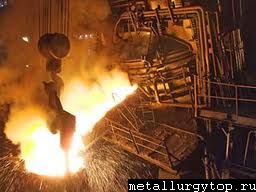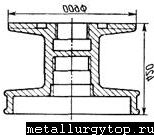Outside of Prague
 In the North American school system students seeking to be the best strive for an 'A' grade. However, the school system is not the end of the drive to be the best and earn an 'A' grade. Letter grades are used by rating agencies to rank communities in terms of investment risk.
In the North American school system students seeking to be the best strive for an 'A' grade. However, the school system is not the end of the drive to be the best and earn an 'A' grade. Letter grades are used by rating agencies to rank communities in terms of investment risk.
Ostrava, in recent times, received an 'A3' grade from Moody's Investors Service.
What does this mean to you as a potential investor? What are the other indicators which would point to the health and prospects of Ostrava's property market?
What does this rating actually mean?
There are 25 rankings from Moodys in the investor services, an 'A3' is seventh from the top and is defined as an upper–medium grade. A similar grading company, Standard and Poors, also gave Ostrava an 'A' ranking based on their grading system.
What will that mean for the city?
Some investors will only look at cities with 'A' ratings. It is an indicator of the financial and fiscal health of the community.
Since the restructuring of the industry in the 1990s, the economic platform of the city has changed substantially. In fact, most of its incomes are no longer dependant on local economic conditions.
Ostrava, in receiving this rating, achieved the identical level of rating as other mid–sized cities in Central Europe. Brno, for example, also received an 'A3' rating (for a complete discussion of Brno property and economic developments visit our feature on Brno property.)
Let's go through some other indicators as to the investment potential for this Northern Moravian city.
Area: 214 km2
Population (latest data April, 2004): 315 000
Road Distance from important European and Czech cities:
City / kms
Brno / 170
Olomouc / 93
Prague / 360
Vienna / 310
Bratislava / 300
Warsaw / 300
Budapest / 389
Berlin / 540
Paris / 1 500
With the completion of the D–47 highway the infrastructure capacity will greatly increase as well as the ease of travel. Travel time to the Czech capital, Prague, will be shortened to a little over three hours.
Air Transportation:
Ostrava – Mosnov International Airport is located 25 km from the city centre. It is the biggest regional airport in the Czech Republic with a capacity of more than one million passengers per year (current actual figures are just over 200 000 per year and expected to triple next year) and a runway 3500m in length and 63m wide, allowing it to accommodate the world's largest airplanes. Currently it caters to both domestic and international flights.
Although there are currently not any well–known low cost carriers flying into Ostrava we expect it will only be a matter of time.
Average monthly salary for Ostrava region (2004): 18 966 CZK
Average monthly salary for Czech Republic (2004): 18 582 CZK
Average monthly salary for Czech Republic (2005 2nd Q): 18 763 CZK
Education: 16.3% of residents in Ostrava have University level education compared to 9.4% Czech wide.
Average temperature in January: – 2°C to –4°C
Average temperature in July: 15°C to 19°C
(hey, some investors want to know this….)
Economy:
Industrial production has always had a strong factor in the economy of the Ostrava region. Mainly its been based on the excavation and processing of coal and on related branches – metallurgy, the coking industry, the chemical industry, electric power generation, civil engineering and heavy engineering. Metallurgy and heavy engineering remain the largest employers in the City.
Some of the Largest Employers in Ostrava
Employer / Business / Activity / Employees (Jan. 2004)
Mittal Steel Ostrava a.s. / Metallurgical production, manufacture of metallurgical and engineering final products / 10 968
Faculty Hospital / Healthcare / 3 180
Czech Railways / Transportation and communication / 3 075
Vitkovice Machining / Machining and Metallurgy / 2 697
Vitkovice Steel / Metal production, processing / 1 682
Ostrava Blast Furnace / Metals and coking–chemical production / 1 305
Foreign Investors in Ostrava
(by no means comprehensive, only a sampling)
Investor (Country) / Business Activity / Employees (Jan. 2004)
Mittal Steel Ostrava a.s. (UK) / Metallurgical production, manufacture of metallurgical and engineering final products / 10 968
Vitkovice Tube Mill, a.s. (Cypress) / Steel tube production / 932
Dalkia Ceska republika, a.s.(France) / Heating and Electrical Production / 697
BorsodChem MCHZ, s.r.o. (Hungary) / Chemical production / 623
Tesco Stores CR a.s. (UK) / Retail / 580
Ahold Czech Republic, a.s. (Holland) / Retail / 529
Hayes Lemmerz Autokola, a.s. (USA) / Production of car wheels and automobile parts / 410
Ostrava Water and Sewage, a.s. (France) / Production and delivery of drinking water, removal and cleaning of waste water / 382
Trefil a Schomberg, s.r.o. (Germany) / Plastics production / 339
Hayes Lemmerz Alukola, s.r.o. (Italy) / Automobile parts manufacturing / 310
Connex Morava a.s. (Czech Republic/France) / Road transportation / 212
Other Investment News
US based Roper Industries Inc. has decided to invest 24 mil. CZK over the next five years into a new technology centre in Ostrava where it will create 18 highly qualified jobs.
"In Ostrava we will be focusing on projects for the development and innovation of our laboratory instruments. The Ostrava centre will supplement the technology centres of our existing Instrumentation Segment operations located in the U.S., Denmark, Germany and France employing in total almost 1000 people,” commented Will Crocker, Roper’s Vice President and Group Executive for the Instrumentation Segment. "The laboratory instruments produced from the design work there will serve foremost our materialography and physical property testing markets. The results from the product development in Ostrava will be utilized by our segment’s production plants abroad where they will produce the final products.”
The new customer support centre of GE Money Multiservis for Czech and Slovak clients, a subsidiary of one of the largest and most renowned American companies will be located in Ostrava (Moravia–Silesia region) and will provide work for up to 500 qualified staff members. The total investment exceeds three million euro.
«Our primary reason for opening the new centre is the growth of GE Money in the Czech Republic," says Jiri Pathy, Chairman of the Board and General Director of GE Money Multiservis, the company in charge of developing the new centre within GE Money group. »In order to maintain a high standard of services, we will gradually increase the number of staff who are responsible for operating GE Money group and caring for its customers. The new customer service centre allows us to continue to fully meet our customers‘ needs," adds Jiri Pathy.
Taiwan–based ASUSTeK COMPUTER INC. is in the process of constructing a new plant and repair center in Ostrava. Investment into the facilities will reach 20 million EUR and eventually at least 1300 employees will work be employed. The centre should produce up to 200 thousand personal computers per month and the capacity of the repair centre should reach 50 thousand computers per month.
"The important factors in deciding on the location of this plant were mainly the preparedness of the industrial park in Ostrava–Hrabová and the proximity to the Technical University of Ostrava with which we intend to closely cooperate. We are interested in their graduates and would like to take part in creating specific study programs for their electrical engineering departments. We are already considering moving part of our technology–driven activities to the Czech Republic,” said George Wu, Associate Vice President of ASUSTeK COMPUTER INC.
The best quality and most beneficial industrial zones in the Czech Republic were handed awards by the Czech ministers. The fifth annual "Industrial Zone of the Year” awards were presented according to the recommendations of the Ministry of Industry & Trade and CzechInvest in cooperation with the Association for Foreign Investment (AFI) and partners in the "Partnership to Support Foreign Direct Investment in the Czech Republic”.
The award for Industrial Zone with the Most Economic Benefits was given to the «Cernovicka terasa» Industrial Zone in Brno, while the Zone with the Most Social Benefit in 2004 was the Ostrava Hrabova Industrial Zone – 1st Stage. The Industrial Zone with the Best Town Planning Solution is being prepared by a private developer in Ostrava –– CTPark Ostrava, and the "Brownfield of the Year” was won by the Skoda Plzen Industrial Zone.
American company CTS Corporation declared plans to invest nearly 22 million dollars into a new facility in the Ostrava region of the Czech Republic. CTS Corporation is a leading designer and producer of electronic components for the automotive and electronics industry. Their main customers are Siemens, Magneti Marelli, Pierburg, Toyota, Renault and Nissan.
The new facility is expected to employ over 160 people within three years. Production in the new plant is targeted for as early as June 2006.
"This investment in the Czech Republic will enable us to raise our production capacity and better serve the European market, which at present is supplied mainly from our plant in Great Britain,” commented Ron Bell, Director of CTS’s European Automotive Operations, and added: "In the Ostrava facility we will be producing electro – mechanical sub – systems and sensors for the auto industry.”
Ostrava Property Figures
Apartment and Flat Rentals in CZK per month (2005 1st Q):
(average range – exceptions can be found either way)
Size / CZK per month
- + 1 (studio or bachelor) / 4 000 – 5 500
- + 1 (1 bedroom) / 5 000 – 7 000
- + 1 (2 bedroom) / 7 000 – 9 000
- + 1 (3 bedroom) / 8 000 – 11 000
House Sales in thousands of CZK per flat (2005 1st Q):
(average range – exceptions can be found either way)
Size / New Build (ave. 17 000 CZK/m2) / Heritage Building
- + 1 (studio or bachelor) / 650 – 950 / 350 – 700
- + 1 (1 bedroom) / 800 – 1 200 / 500 – 800
- + 1 (2 bedroom) / 1 300 – 2 500 / 700 – 1 200
- + 1 (3 bedroom) / 1 800 – 3 000 / 1 200 – 2 100
Property Examples
(common closing prices are commonly 5 – 10% less than the asking price)
Property Description / Link
Studio (1 + 1) flat right in the center of Ostrava. 37 m2. Completely reconstructed. Floor 5 of 5 with an elevator. Asking price: 395 000 CZK / Ostrava Property Example 1
- bedroom (3 + 1) completely reconstructed. Floor 1/3. 76 m2. The price includes a garage. Asking price: 1 260 000 CZK / Ostrava Property Example 2
More examples added regularly…
As we’ve emphasized before, at Czech Point 101 we are not going to over–inflate figures or try to sell you on hyped up facts. Our goal is to inform you to make the best investment decisions possible.





Metal Shaping - One of the Metal Forming
 A piece of metal, may it be large or small, can be used to create another kind of object. There are several processes which you can use to be able to do it. Metal shaping is just one of the countless metal forming and shaping operations that big and small industries use to manufacture their products.
A piece of metal, may it be large or small, can be used to create another kind of object. There are several processes which you can use to be able to do it. Metal shaping is just one of the countless metal forming and shaping operations that big and small industries use to manufacture their products.
Metallurgy is the study of metal. It is a science that deals with the different characteristics and properties of all metals. It also involves what physical and chemical changes these metals undergo when exposed to certain conditions such as high temperatures, very low temperatures and many more. People who are into metal crafting use metallurgy as their major source of knowledge. In metal crafting, information like the melting point, tensile strength, chemical composition and bonds of metals are considered all the time. That is why it is extremely useful that metal crafters know about all these stuff.
The art of metal shaping and crafting has been ongoing for many, many years. It is quite difficult to trace back when exactly it started. Experts said that the early people used metals as weapons against enemies and wild animals, and also as tools for hunting and cooking their food at home. The ancient men would shape the metals into something long or sharp so that they could efficiently use it to do their everyday tasks.
Gold is believed to be the first metal used by men. The early civilizations would extract it and then melt it to form objects that would help them survive. Not too long after that, people learned to make use of gold as ornaments and jewelry for their clothes and bodies. They also started using gold alongside other metals such as copper and silver.
Metal has played a significant part in our society. If you notice, some of the most important time periods in the world's history are named after metals, such as the Bronze Age and the Iron Age. These eras just showed how big metals were in people's lives back then, and up to now.
Today, the metal shaping and forming have become broader. People have invented machineries, equipment and tools to do everything faster and more efficiently. Rollers and presses are just two of the tools that men have developed to aid in their industrial needs. They have also come up with techniques to do things better, which is a great thing to further improve our lifestyle as the years go by.





A Metallurgist's Role is to Attain Equilibrium
 Metallurgy
Metallurgy
Making metals, and alloys into different forms has value in practical use is what makes the essence of metallurgy. Some metals are typically based in their native or free elemental form; examples of these are silver, gold and copper. There are also limited number of native metals that can be developed from seawater in particular is magnesium. However, most metals are taken out from naturally occurring compounds of mineral that can be searched at or close the surface of the earth.
To extract metals from their ores there are three types of processes, these are through mineral process, chemical extraction and refining. Mineral process is turned–down into concentrates; chemical extraction breaks out concentrates into metals and slag and other residues and refining creates by–products and fine–tuned metals. Its products are used in the craft of metalworking often utilized as alloys. There are lot studies on understanding the system of iron–carbon alloy that includes casting steel and irons.
The use of low–cost plain carbon steels or galvanized steel is very beneficial to high–strength applications since they do not corrode much. For application that requires strength and lightness, alloys of aluminum and magnesium are suited. For non–magnetic applications, copper–nickel alloys are preferable to use because they do not corrode easily. Machines such as heat exchangers and turbochargers mostly made up of nickel–based superalloys like inconel because they have high temperature resistance. Single crystal alloys use is for applications in super high temperatures because they minimize creeps.
Metallurgy is mostly concerned with producing metallic constituents so that consumers will use it or engineering sections for their specific needs. This requires the manufacturing of alloys, the shaping, the heat treatment and the surface treatment of the product. Metallurgist's role is to attain equilibrium between the properties of metals such as weight, strength, cost, corrosion and fatigue resistance, and operation in extreme temperatures. Thus, operating environment must carefully studied and considerations are thoroughly decided. Also taken into consideration that ferrous metals and some aluminum alloys corrode quickly in a saltwater environment.
At very low temperatures or cryogenic, exposure of metals poses bad effect on the properties such as easily influenced by shaped, bent, or drawn out which is prone to break–ups. Metals put under cyclic tests, such as wave or earthquake–like conditions imposed, suffer from fatigue. Also at elevated temperatures, metals constantly under stress condition might creep. That is why the branch of metallurgy in science is a very interesting field to make innovations to and there are still lots of opportunities for young ones to become metallurgists.




